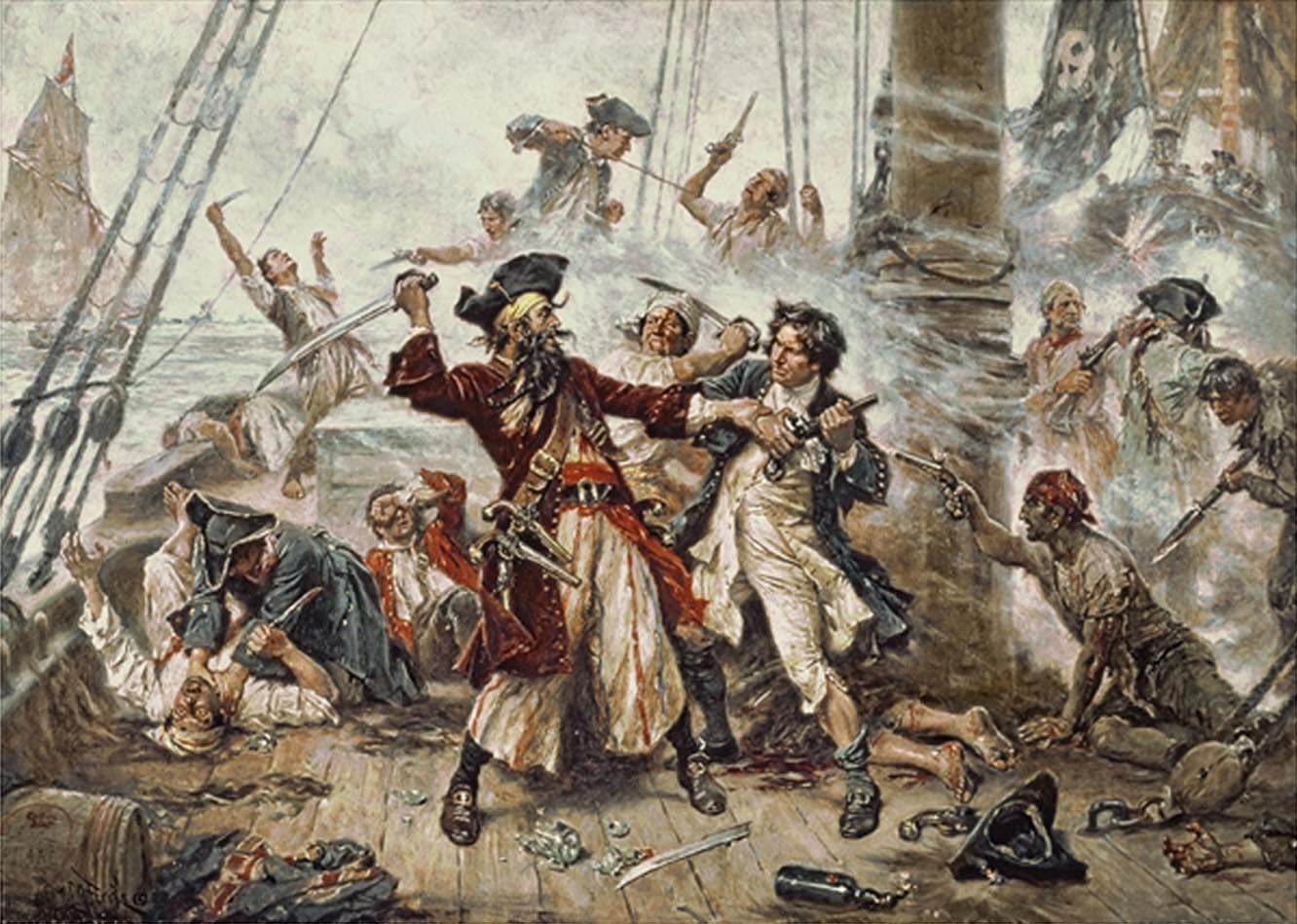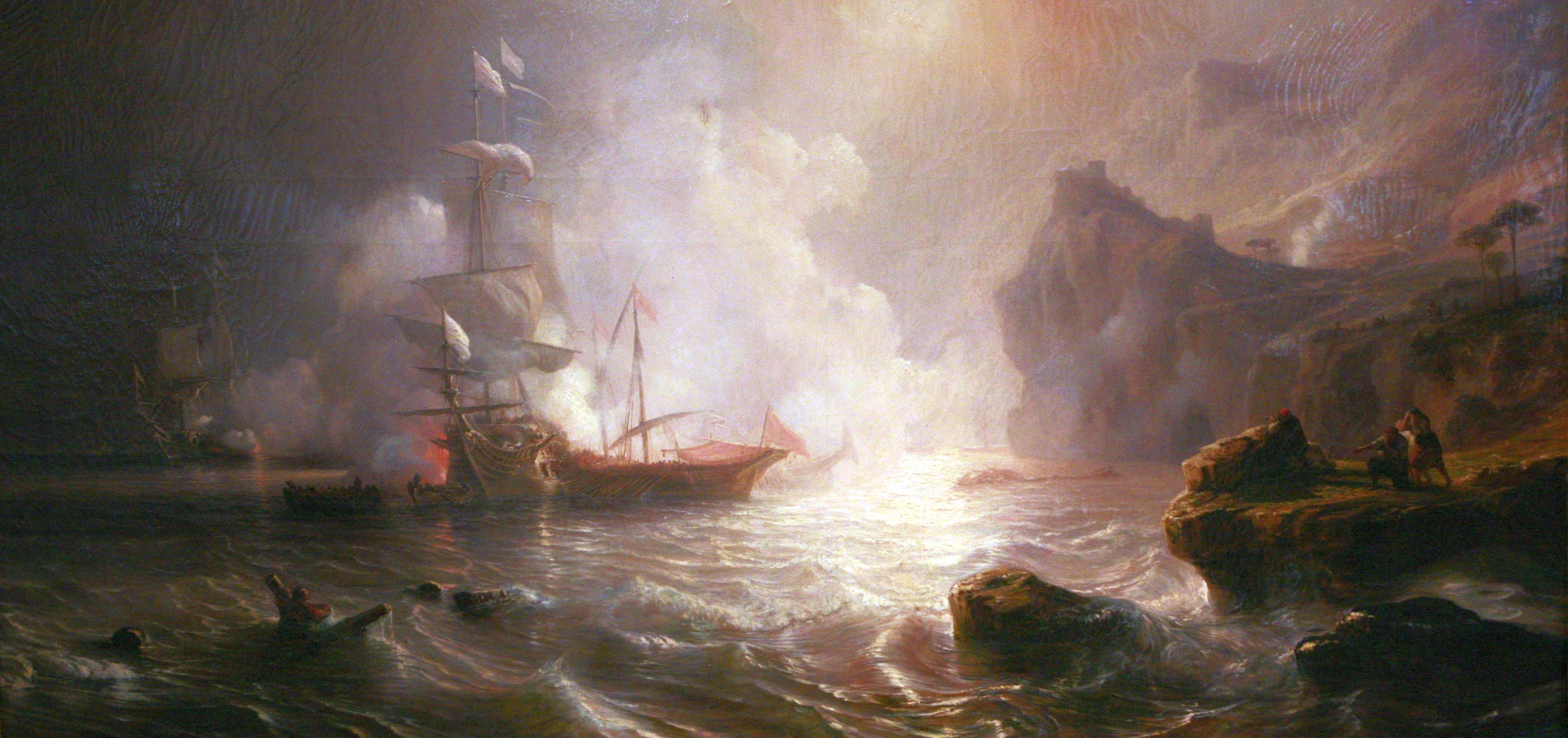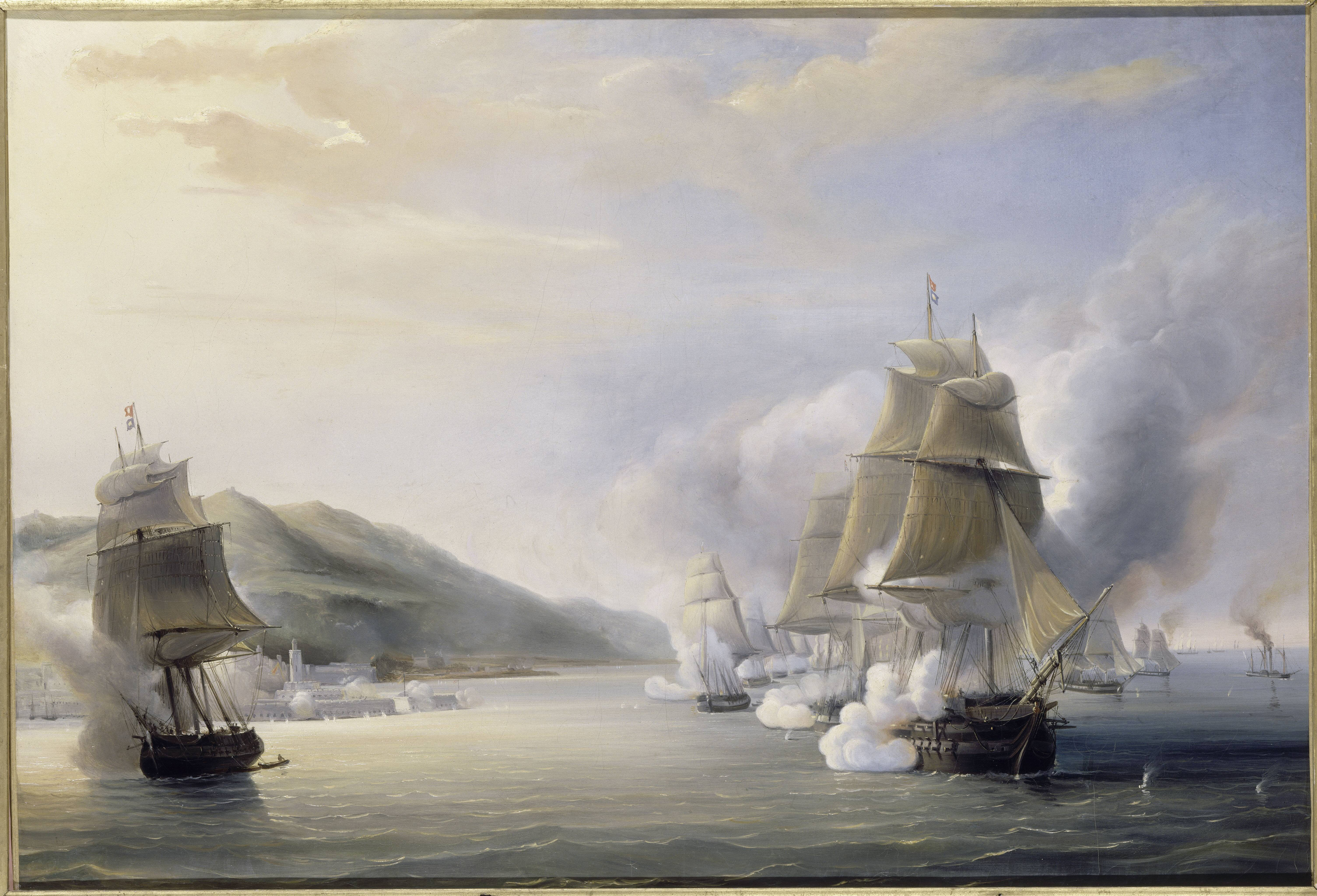Ye Pirate Bold
Dead Men Tell No Tales
Curated by Sonia Larbi
 |
| Howard Pyle, The Buccaneer was a Picturesque Fellow, 1905 |
"Why
is it that the pirate has, and always has had, a certain lurid glamour of the heroical
enveloping him round about? Is there, deep under the accumulated debris of
culture, a hidden groundwork of the old-time savage?" asks Howard Pyle in The Book of Pirates.
There was indeed a savage hidden within Captain Scarfield. Known as Eleazer Cooper to his friends and family in colonial Philadelphia, John Scarfield holds the honor (notoriety?) of being the first and only Quaker pirate. According to legend, Eleazer Cooper held a prominent position in the Society of Friends. He spent many months out of the year residing in his parent's large estate, quietly smoking pipes, reading, and preaching. This mild-mannered man was a bastion of Quaker virtue in his community, as well as a successful wheat and flour merchant. He had tripled his fortune during the British blockade that occurred during the War of 1812. In person, Pyle writes, "His face was thin and severe, wearing continually an
unsmiling, mask-like expression of continent and unruffled sobriety." No one knew of his other life.
Captain Scarfield was a terror in the Caribbean. Merchant ships traded cargo for cannons in order to protect their goods from him. The captain controlled a fleet of the fastest ships in the British navy - commandeered of course. From time to time, battle galleons would be deployed from Britain or the colonies to eradicate the buccaneer, but Scarfield always escaped their clutches. In battle, Pyle writes, Scarfield's previously stern face would be replaced by "...a
diabolical grin. The teeth glistened in the lamplight. The brows, twisted into
a tense and convulsed frown, were drawn down into black shadows, through which
the eyes burned a baleful green like the eyes of a wild animal driven to bay."
The Buccaneer was a Picturesque Fellow captures this ruthless pirate in full splendor. Wrapped in a Spanish-red cape - most likely pulled off of an unlucky Spaniard's body - and crowned in a deep purple tricorn hat, Scarfield looks nothing like the meek Quaker preacher he claimed to be. Instead, this swaggering pirate lords over his tropical island like a king. Bags of money and treasure lie at his feet as his crew doses in the background. Heavily armed with two different kinds of guns and a sword, this is a man who doesn't take any chances. What is most striking about this work, however, is the cloud formation in the sky. It looms overhead like an ominous warning. Or, the mass in the sky could prove to be the only remains of a vicious sea battle. Scarfield was known to set fire to any ship he could not use himself. Regardless, the formation in the sky underscores the pirate's presence within the painting, making him larger than life.


























